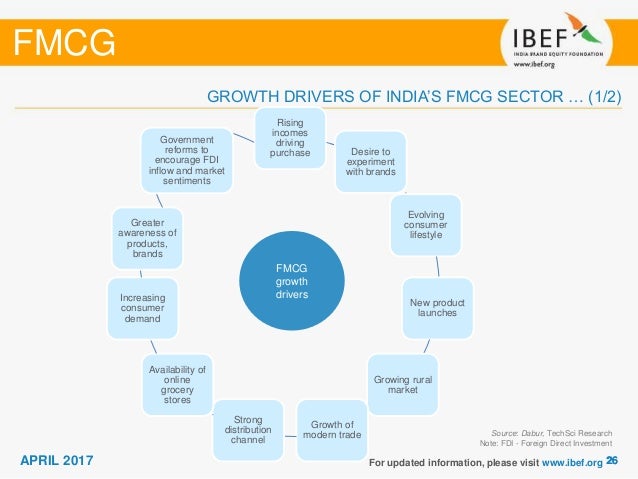Growth Drivers Of Fmcg Sector
Posted : adminOn 5/14/2018
Africa’s path to growth: Sector. So there is huge potential for growth in a sector now expanding. Adobe Lightroom Cracked Apk Download. From fast-moving consumer goods manufacturers to banks.
Growth strategies for FMCG • 1. Growth Strategies For FMCGAli HeydariMBA – MarketingIV Semester • FMCG Fast-moving consumer goods (FMCG) or consumer packaged goods (CPG) are products that are sold quickly and at relatively low cost. Examples include non-durable goods such as soft drinks, toiletries, and grocery items. Though the absolute profit made on FMCG products is relatively small, they generally sell in large quantities, so the cumulative profit on such products can be substantial.
• Introduction The success of an FMCG depends greatly on its marketing strategy. Typically a marketer pursues a wide combination of strategies. For instance when prices are competitive the company would use an extensive distribution network, design suitable advertising and sales promotion schemes for time to time. • 1. Driver Canon Ir5000 Windows 7 64 Bits. Multibrand Strategy A company often nurtures a number of brands in the same category. There are various motives for doing this. The main rationale behind this strategy is to capture as much of the market share as possible by trying to cover as many segments as possible, as it is not possible for one brand to cater to the entire market. This also enables the company to lock up more distributer shelf space. Example: Hindustan Lever.
It has Dove in the ultra premium segment, Lifebuoy for the economy segment and brands like Rexona, Liril, Lux, Le Sancy for the intervening segment. • 2.Product Flanking Refers to the introduction of different combinations of products at different prices, to cover as many market segments as possible. It is basically offering the same product in different sizes and price combinations to tap diverse market opportunities. The idea behind this concept is to flank the core product by offering different variations of size and price so that the consumer finds some brand to choose from. Example: Vicks the cough and cold relieving medicine is now available in small containers and also as inhalers, cough drops and cough syrups. • 3.Brand Extensions Companies make brand extensions in the hope that the extensions will be able to ride on the equity of successful brands, and that the new brand will stand in its own right in the course of time. A well respected brand name gives the new product instant recognition and easier acceptance. It enables the company to enter new product categories more easily. Example: Amul. With the success of its first product, Amul milk powder, the company came out with Amul ghee, Amul butter, Amul cheese, Cheese spread, and finally added Amul chocolates to its portfolio. • 4.Building Product Lines Some companies add related new product lines to give the consumer all the products he/she would like to buy under one umbrella. Example: Britannia has adopted a similar strategy. It has introduced different kinds of biscuits and backed foods in the past few years. By adding a number of flavours in each product line the company grew in the industry.
• 5.New Product Development A company can add new products through the acquisition of other companies or by devoting one’s own efforts on new product development. With the help of new products a company can enter a growing market for the first time, and supplement its existing product lines. Example: Dove by HLL is an example of creating an entirely new premium segment. For the first time in India, a soap with One-fourth moisturiser was offered to the consumer. It has been positioned for the super premium segment as a skin care product not as a soap. • 6.Innovations in Core Products In the FMCG market, the life of a product is short. Marketers continually try to introduce new brands to offer something new and meet the changing requirements of customer. It is prudent for a marketer to innovate from time to time both by technological expertise as well as from the consumer’s or dealer’s feedback. Such innovations are tried out around the core products of a company. • 7.Long term outlook Many companies adopt a long term outlook towards growth in an FMCG market. In the process, short term gains which might adversely affect the long term prospects of the company are sacrificed. Example: Kellogg’s in Mexico. The concept of cornflakes for breakfast promoted by Kellogg’s is entirely American in nature and in Mexico which is culturally so different from America, could not accept. Kellogg’s with its long term outlook took 28 years before finally breaking even. Today is the market leader in the breakfast cereals market, enjoying an unparalleled monopoly. • 8.Extending the PLC Economic conditions change, competitors launch new assaults, and the products encounters new types of buyers and new requirements are situations in which a FMCG company try to extend the PLC. In the mature stage of the PLC, some companies abandon their weaker products.